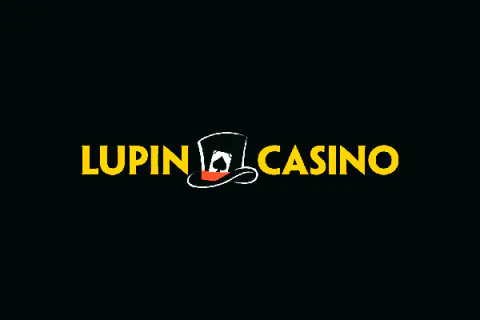Spanish 21 in Online Casinos
Whether you are a blackjack fanatic or simply enjoy playing really cool card games against the house, you should take a gamble on the great game of Spanish 21. The original 21 card game traces its roots back to the very early 17th century, and Spanish 21 has been around nearly as long. The game has been around so long that it likely is an original variant of the first 21 game and simply uses the Spanish deck, which does not contain any numbered “10” cards. The rest of the deck is the same as a traditional 52-card deck used in blackjack.
With a deck that has just four fewer cards and gameplay that is nearly identical to blackjack, some might ponder the game’s appeal. The appeal mostly comes in the many additional side wagers that Spanish 21 provides and the many special payouts that brick-and-mortar and online casinos typically offer.
Many blackjack players want a slightly different game that still leaves a relatively slim house advantage in place when compared to other popular casino games. Spanish 21 provides that variation along with an abundance of side wagers and other potential wins that increase the payout for hitting 21. The game is different enough to give bettors more options for gaming excitement but familiar enough that blackjack players readily adapt to its subtle variances.
Top Casinos Offering Spanish 21 in 2025
Sorry, nothing to display.
Everything You Need to Know About Spanish 21
If you are like most gamblers, you already know how to play blackjack with some level of competence. Anyone with a good grasp of blackjack should find it easy to adapt to Spanish 21 blackjack. The playing table is very similar to blackjack, and you have several special side wagers that you can lay. Many casinos also let you buy the insurance and surrender bad hands, just like in blackjack.
In both games, you aspire to hit 21 or as come close as possible without going over. Because it does not have any 10 cards, Spanish 21 blackjack has 25 percent fewer cards valued at 10 than the comparable 52-card deck that blackjack players use. Fortunately, the house also has a harder time hitting 21, so the house advantage remains small. Some casinos use a single deck, while others might use up to eight decks to play Spanish 21 and generally thwart card counting.
What Exactly is Spanish 21?
Spanish 21 is a very fun and very old version of the original 21 card game and plays virtually the same way as blackjack but without any 10s. Face cards are worth 10, aces 11 or 1, and numbered cards are worth their respectively indicated numerical values. The house and each player receive the same number of cards to start their respective hands, and players get to draw as many cards as they wish until going bust.
You can split cards in each game and lay special side bets against the house, but Spanish 21 offers a greater abundance of potential side bets. Payouts generally are the same as in blackjack, although some casinos might pay better than others for either game. You have a wider range of potential side bets and can buy insurance to protect against bad hands. Different casinos and online gaming platforms likely will have subtle variations.
Spanish 21 Vs. Classic Blackjack: What’s the Difference?
While the card values and requirements for a winning hand are identical in Spanish 21 and blackjack, the games have significant differences that exceptionally skilled players might use to their personal advantage. The most obvious difference is the lack of 10s in the playing deck and its subsequent impact on the potential for hitting a blackjack, which is to reduce to reduce the chances of it happening.
Aside from the lack of 10s, another significant difference is the no-push rule when a player and dealer have 21 or a blackjack. The player always wins when he or she has 21, and so does the house without having a blackjack. Only a blackjack in the dealer’s hand will beat a 21 score by a player. Spanish 21 also offers several side bets and enables more card splitting by players than traditional blackjack affords.
Spanish 21 Rules
Spanish 21 is a relatively simple game to master but can get more complex when you start looking into the wide range of side bets. The initial deal goes the same as blackjack with each player and the house getting one card dealt showing and the other one hidden on the initial deal. Spanish 21 blackjack rules let you hit for as many more cards as it takes to get as close to 21 without going bust.
The greatest advantage that the Spanish 21 blackjack rules provide bettors no push on 21. Unless the house gets a blackjack, the bettor always wins when hitting 21. If the bettor also has a blackjack, then the bettor wins the hand. With the 10s removed from the deck, a 21 or blackjack becomes a near-certainty for bettors who draw them.
The bettors always go first, which adds to the house advantage. If you go bust, the house does not have to draw a card to beat your hands. Spanish 21 blackjack rules give you a higher payout for 21 when you have six or seven cards in the winning hand. You also could win a “super bonus” for special hands that give you bonus payouts.
Spanish 21 blackjack rules usually require the dealer to hit on 16 or a soft 17 and stand on a hard 17. A soft 17 has an ace, while a hard 17 is any other card combination adding up to 17 without an ace.
Special plays can also make Spanish 21 even more captivating for smart and skilled players who fully understand the game. You can stand, hit, or split the cards just like in blackjack, and you can buy insurance that pays 2:1 if it hits. In Spanish 21 with no 10s, the house advantage on an insurance bet is almost 25 percent.
Spanish 21 Betting and Payouts
The wagering in Spanish 21 is identical to blackjack, with each player laying at least the minimum bet in the designated wagering spot on the gaming table. If your hand beats the house, you win whatever you wagered. The payouts go up for blackjack and special winning combinations of 21.
A simple win over the house pays even money. The win increases to 3:2 if you hit 21 with five or fewer cards. Six cards totaling 21 will net double your win at most casinos with a 2:1 payout, and seven or more cards totaling 21 is good for 3:1 in many casinos. The house also offers special payouts of as much as 3:1 for a 21 score made up of three 7s, a 6-7-8 of the same suit, and similar special card combinations.
The wagering can get more interesting when you double down and split cards. Spanish 21 enables doubling of bets and even redoubling of initial bets and has a surrender option after doubling down. The game also allows splitting of any identical pairs of cards. If you are dealt another matching pair after the split, you can split that pair, too. You get to draw as many cards as you like for each split hand until it goes bust.
If you draw a particularly bad hand and consider a loss to be the likeliest outcome, many casinos will let you surrender your hand and keep half of your wager. If the dealer drew a blackjack, though, no surrender is possible because the blackjack wins in all but a tie. The idea behind the surrender is if you are at least 51 percent likely to lose the hand and the dealer, you can simply surrender and await the next hand. Even if the dealer draws cards and goes bust, you still lose.
Spanish 21 Strategies
With a wide range of potential winning hands and special plays available in Spanish 21, simplifying the game with some standard betting strategies can help to make it more enjoyable and profitable.
The strategy starts with picking the right Spanish 21 game. You want to play one in which the dealer must stand on a soft 17 because that gives you a very slight increase in the odds of winning by 0.2 percent. While that is a minuscule sum, it reaches statistical significance when you play enough games.
The number of decks used makes a significant difference in payouts at many casinos. A six-deck game has fewer 10 cards than a game that uses eight decks, so the corresponding payouts generally are higher when you play a six-card deck at a casino.
When it comes to wagering, the simplest strategy is to always hit on a hard 8 or less in your hand and always stand when you have a hard 17 or higher. An 8 score cannot go bust and might force the dealer to hit and go bust if you draw a face card or ace. A hard 17 runs a high risk of going bust but can win if the dealer goes bust. Highly skilled and experienced blackjack players will find the smart plays to be identical in Spanish 21.
Those wanting to get the greatest possible advantage in Spanish 21 need to look for opportunities to lay additional wagers on a particular hand. Splitting cards and doubling down bets are just two common ways to mine greater profit from a strong hand.
One of the biggest bonus wagers is called “Match the Dealer.” You need to match the up card that the house initially is dealt. When using several decks, the player might have an identical card in his or her hand, which could pay off at 12:1 when using six decks and 9:1 when playing with eight decks.
Even if you do not have an identical card in your hand, you also could win by having a card of the same value but of another suit. If the entire hand adds up to the value shown by the up card that the dealer holds in the house’s hand, that also wins the Match the Dealer side wager.
Spanish 21 Tips
As with any game of chance, the more that you can learn and master, the more likely you can overcome the house advantage and win on a relatively consistent basis. You can obtain a strategy chart that requires rote memorization to master in gaming situations. The strategy chart provides detailed information on when to hit, stand, split card or double down on wagers based on the initial deal. The strategies differ based on whether or not the house’s hand is hard or soft and the house rules governing hitting or standing on a hard or soft 17 for dealers in Spanish 21.
If you obtain a strategy chart, you need to ensure it is for Spanish 21 and not blackjack. The lack of 10s in Spanish 21 changes the odds enough to make significant changes to when you should hit, stand, double down or split cards in Spanish 21 versus blackjack. The house already knows how it will play every possible hand and sticks with it to ensure its slim advantage remains significant.
You need to have similar mastery of the best plays and strategies to give yourself the greatest chance of winning a significant sum. The best plays for hard totals are not the same as the best plays for soft totals, so there are two full sets of optimal betting plays that highly skilled players typically learn to gain the best possible advantage over the house.
While the game does offer many very tempting and potentially lucrative side bets, the smart play is to focus on the cards and winning in more traditional ways. The Match the Dealer side wager greatly increases the house advantage. So do many others, which is why the house offers them with very tempting payouts.
Spanish 21 FAQ
What is the Main Goal in Spanish 21?
The player wants to come as close to 21 as possible without going over and can take as many cards as needed to get there. When a player hits 21, that player always wins – unless the house has blackjack. If the player and house both have blackjack, the player wins. A tie always goes to the player in Spanish 21.
What are the Payouts in Spanish 21?
Because you can get as many cards as it takes to hit 21, the payouts in Spanish 21 vary based on how many cards it takes to get to that magical number. Beating the house’s hand with a score of 20 or less pays off at 1:1. A 21 with no more than five cards regardless of their suit pays 3:2, six cards pays 2:1 and seven cards pays 3:1. Many casinos also pay 3:2 when the player hits 21 with a 6, 7 and 8 of any suit and 2:1 when the suit is the same. Some casinos also offer a special payout for drawing three 7s to reach 21.
What is the House Edge in Spanish 21?
The house holds about a 2 percent edge on traditional wagers in Spanish 21 blackjack and about a 3 percent advantage on side bets. The house advantages are slightly better for Spanish 21 blackjack players than the larger house edge on similar wagers in traditional blackjack.
What is the Best Strategy for Spanish 21?
Spanish 21 offers a multitude of potential playing strategies. Those looking to keep it relatively simple always should hit when holding 8 or lower and always stand when holding 17 or more. It is impossible to go bust when holding 8 or less while 17 or more runs a relatively high risk of going bust.
What are the Odds in Spanish 21?
For the house to hold an about 2 percent advantage over players, it must win about 51 percent of hands played. The Spanish 21 odds give players about a 69 percent chance of going bust on a hand.
How Old One Should Be to Play Spanish 21?
Online and brick-and-mortar casinos typically require bettors to be at least age 21 to enter casino gaming areas and play games of chance. The game rules are simple enough that much younger players can learn it while playing strictly for fun.






